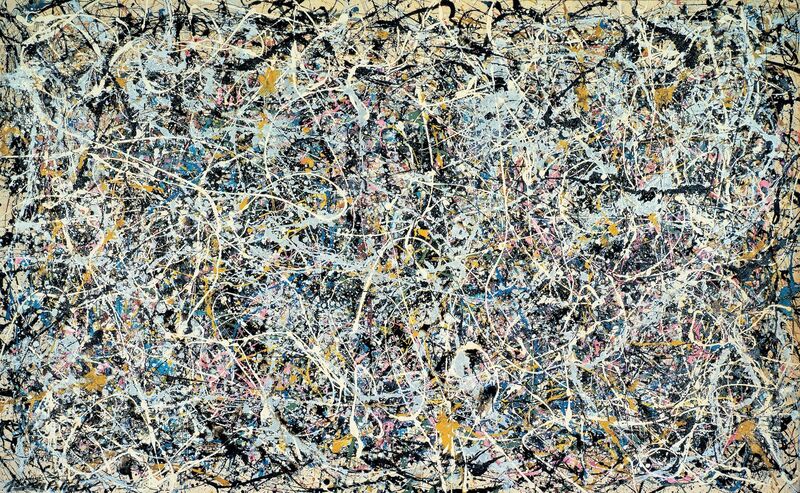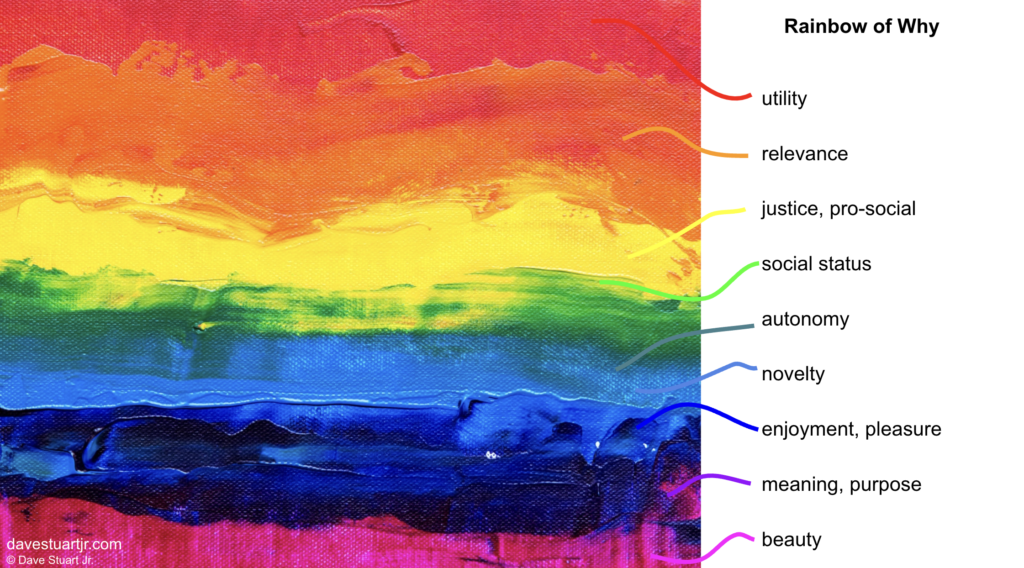Last time, we looked at this video of Caroline Ong in her Geometry class going on a “math is beautiful” tangent with her students.
I labeled this as an example of a strategy we're currently contemplating: An Apologist Winsome and Sure. Head here for a brief explanation of what the heck I mean by those words. They mean a LOT to me in the realm of cultivating student motivation. A LOT.
This time, I want to talk about Jackson Pollock.
Wait… Jackson Pollock?
Yes. This is a standard example of a Jackson Pollock painting:

It's one of the pieces that a non-artsy person would probably respond with, “Wait, why is that art!?”
But here's what I see:
- It's bold.
- It's counter-cultural — this thing was made in 1949, about the same time cookie-cutter communities like Levittown were becoming popular.
- It's energetic.
- It's got this “made-on-the-fly” feel to it (Jackson called it an “action painting”).
These descriptors, to me, have a lot in common with what Caroline Ong is doing in her classroom with what I call the Rainbow of Why.
The Rainbow of Why
What follows is a diagram I use when visiting with teachers to illustrate just how many ways there are in the research for coming to Value something.

There are a few main points I want to make about this Rainbow of Why:
- You'll move students best toward Value when you intentionally use all the colors. In American education, we tend to paint way too frequently with utility — when and how is this lesson useful — and relevance — how is this lesson relevant to my particular self; overuse of these two colors trains some of our students into becoming unhelpfully self-focused.
- This is a painter's palette for a reason — I want you to view Value cultivation as a creative work, an exploratory work, a beautiful work; not a have-to, a get-to; not a job, but rather a joy.
- And finally, I want you to paint with these colors like Jackson Pollock; be bold, be counter-cultural, be energetic, be okay with “on-the-fly” action painting.
More to come.
Leave a Reply